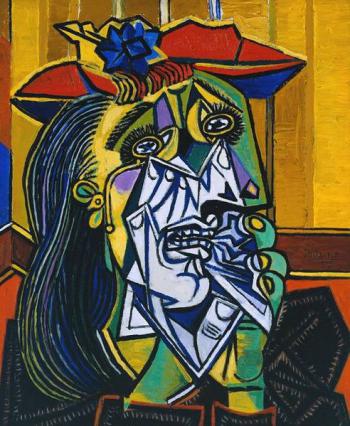Serendip is an independent site partnering with faculty at multiple colleges and universities around the world. Happy exploring!
Surrealism - The How of Why

 Surrealism and impressionism are my two favorite art movements to date. Whilst on my grad trip to London with my best friend, I saw one of Picasso's Weeping Woman pieces in the flesh (or canvas). Up close, you could feel her sorrow without knowing where her sorrow stems from. I believe this is achieved through the jagged edges and the dichotomy of the black/white portion and the rich color around it. It is both beautiful and emotionally raw.
Surrealism and impressionism are my two favorite art movements to date. Whilst on my grad trip to London with my best friend, I saw one of Picasso's Weeping Woman pieces in the flesh (or canvas). Up close, you could feel her sorrow without knowing where her sorrow stems from. I believe this is achieved through the jagged edges and the dichotomy of the black/white portion and the rich color around it. It is both beautiful and emotionally raw.
Surrealism grew in out of the Dada (or anti-art) movement during World War I. Interestingly, Sigmund Freud helped foster the movement whilst studying patients suffering from shell-shock. André Breton worked with Freud and was fascinated with his dream analysis and the concept of liberating the imagination. In dreams, we unconsciously and randomly mix events, thoughts, voices, etc. that we've seen throughout the day. Our brain tries to make sense of them by making a story out of them. Breton loved this idea, and so did his followers: Juxtaposing things that normally might not have anything to do with each other, and then trying to find a meaning to it.
Breton and his followers created the Surrealist Manifesto in 1924 and the movement took off. It melted into other areas of culture, such as political thought and social theory. While the heyday of surrealism was in the 1930's, the movement is still evolving.


